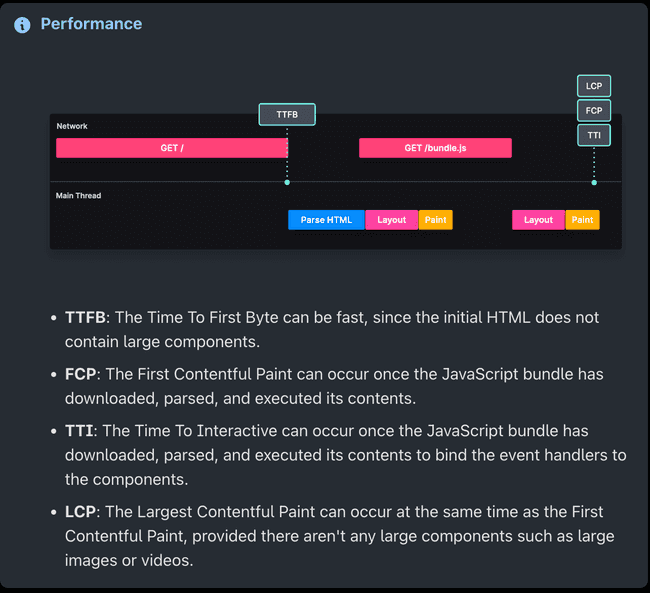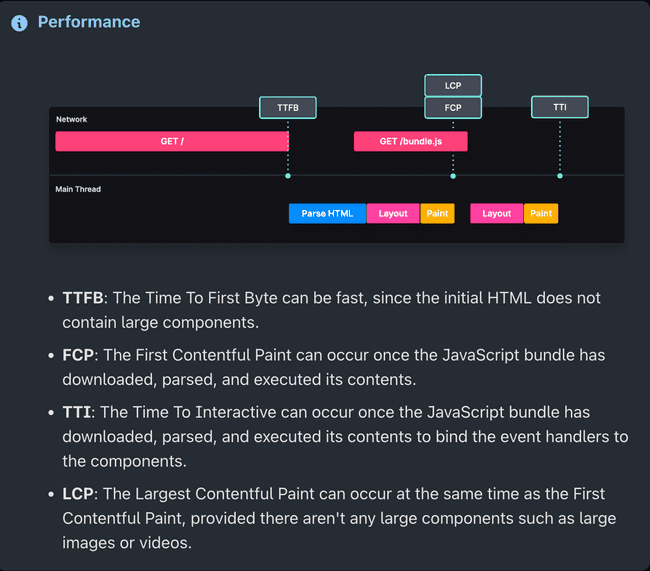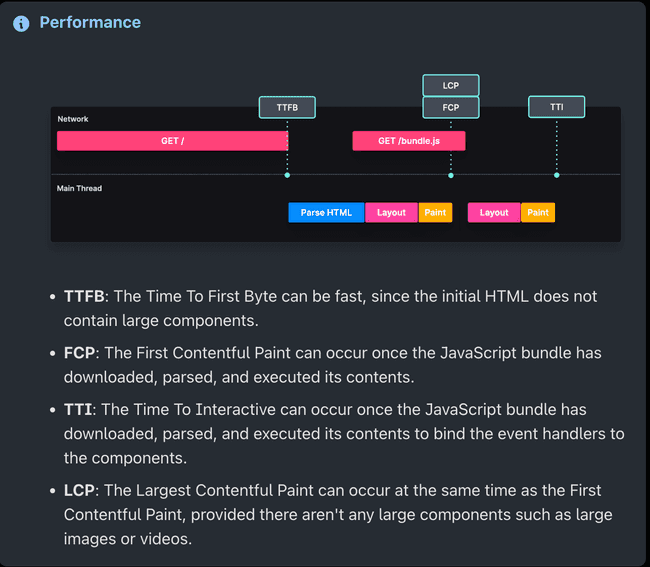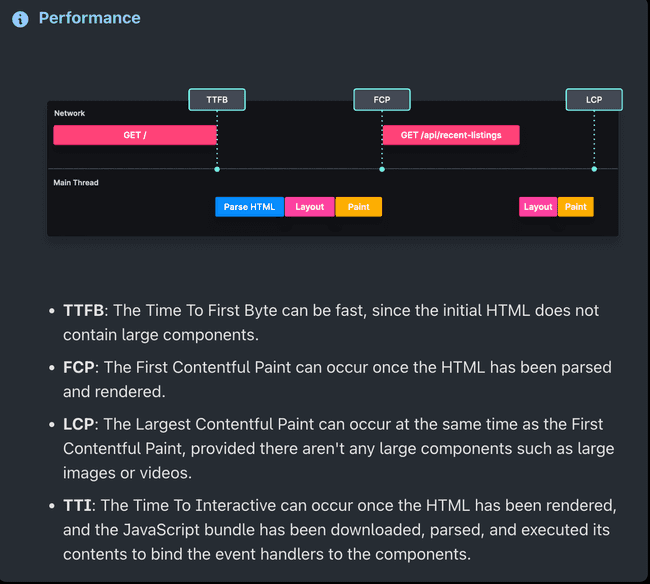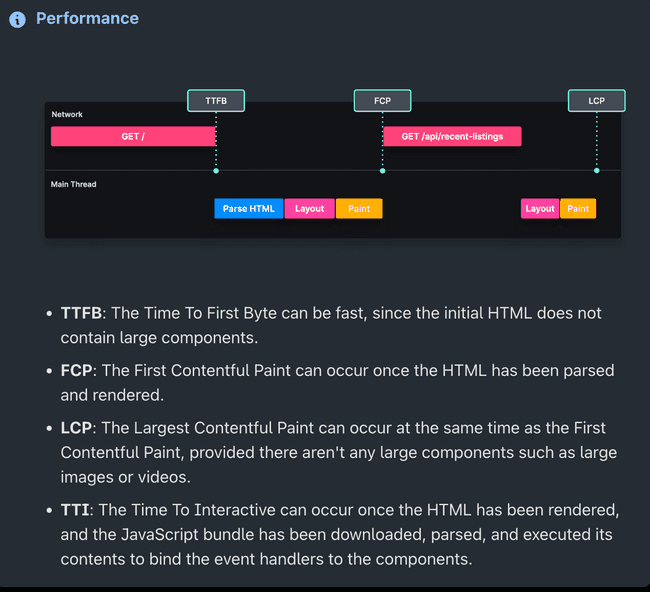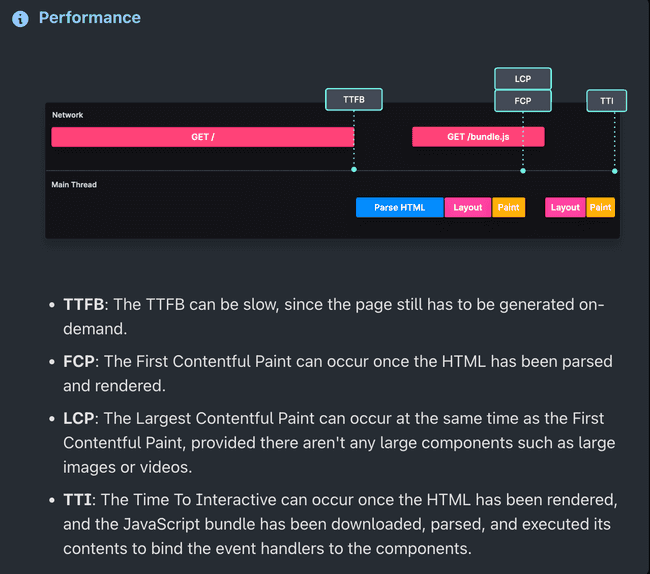FEM A Tour of JS Patterns
February 11, 2022A Tour of JS Patterns
- https://javascriptpatterns.vercel.app/patterns/design-patterns/singleton-pattern
- https://frontendmasters.com/courses/tour-js-patterns/
- https://www.patterns.dev/
- https://leanpub.com/composingsoftware
- https://www.theavocoder.com/ ✅ ⚠️ ⛔
Module Pattern
✅ encapsulation: controls public/private footprint ✅ reusability: can be used in entire app
type="module" or use .mjs extension
Singleton Pattern
Use case: ensure a single DB connection ✅ memory: can save memory for one instance ⚠️ unnecessary: ES2015 modules are singletons ⚠️ dependency hiding: it's not clear that you are using a singleton ⚠️ global scope pollution: they are global vars ⚠️ testing: reset after every test
Make sure to export the instance not the class and freeze objects.
// 2. Freeze the object using the `Object.freeze` method, to ensure the object is not modifiable.
const singletonCounter = Object.freeze(counterObject);
// 3. Export the object as the `default` value to make it globally accessible.
export default singletonCounter;
Proxy Pattern
Use case: validation, logging, formatting, notifications, debugging
✅ Control: see use cases ⚠️ Long handler execution can cause performance problems
Reflect returns a truthy value which is important for proxies.
Observer
✅ separation of concerns, loose coupling ⚠️ notifying all observers can take a lot of time if it becomes complex or if there are too many observers to notify
Could parallelize if promises or similar.
Factory
✅ DRY ⚠️ Not very memory efficient or useful in js
A function that returns objects
Prototype
✅ memory efficient. Items are stored on the prototype rather than each instance ⚠️ Readability. With multiple extensions it's hard to see where properties came from.
__proto__ shows prototype
Container/Presentation Pattern
Separate logic from the view. ✅ separation of concerns. the presentation can be pure functions ✅ reusability. views don't affect state ✅ testing, eay pure functions ⚠️ Not necessary with hooks, they achieve the same thing ⚠️ overkill for smaller applications
HOC
Wraps a component and adds props, extracts logic ✅ separation of concerns ⚠️ naming collisions ⚠️ readability
Render Props
Passing components as props to other components ✅ Reusability ✅ Separation of concerns ✅ Solution to HOC problems ⚠️ Unessesary with hooks
Hooks
Add state to functional components, reuse stateful logic, and manage component lifecycle.
✅ Simplifies components ✅ Reusing stateful logic ✅ Sharing non-visual logic ✅ Good alternative to older react design patterns. ⚠️ Rules of hooks.
Provider Pattern
A HOC that allows passing a context. ✅ scalability ⚠️ components that consume the provider context re-render whenever a value changes
Compound Pattern
Multiple components work together for a single task. ✅ State management, compound components manage their own internal state and share with children. ✅ single import ⚠️ Nested components. Only direct children have access to props ⚠️ Naming collisions. Cloning performs a shallow merge.
Bundling/Tree-shaking/compiling
Bundlers
Bundles the application in one or multiple files, making it possible to run in other environments.
- Webpack (We'll be using this one in the following examples)
- Parcel
- Rollup
- https://frontendmasters.com/learn/webpack/
Compilers
Converts javascript or Typescript into another version.
Minifiers
Reduce the size by removing comments, making variable and function names smaller, removing white space, etc.
Combination
There are tools that combine the steps
- SWC - a Rust-based compiler, bundler, and minifier
- ESBuild - a Go-based compiler, bundler, and minifier.
Bundle Splitting
Creating multiple, smaller bundles rather than one large bundle.
Tree shaking
Dropping unused code
Static Import
Importing code exported by another file. As long as you only import used classes it can only bring in what is needed.
import module1 from './module1'
✅ loading instant dependencies. They are compiled this way ✅ optimizations. Statically imported modules are analyzed and tree-shaked ⚠️ Large bundle size. If importing all, you might bring in unneeded code
Dynamic Import
Import code on demand. Static imports are bundled and included. Dynamically imported is the run time, when the user interacts.
✅ Faster initial load. ⚠️ Layout shift. The dynamic layout can shift. ⚠️ User experience. Lazy loading needs an initial render, which may be long.
Import on Visibility
Load non-critical components when they are visible.
- https://developer.mozilla.org/en-US/docs/Web/API/Intersection_Observer_API
- https://www.npmjs.com/package/react-intersection-observer
✅ Faster initial load. ⚠️ Layout shift. If the fallback component differs the layout will shift.
Route Based Splitting
Dynamically load components based on the current route.
✅ Faster initial load.
Browser Hints
Use hints to tell the browser about (optionally) critical resources.
Prefetch
Fetch and cache the resources that may be requested soon.
<link rel="prefetch" href="./about.bundle.js" />
const About = lazy(() => import(/* webpackPrefetch: true */ "./about"));
✅ loading time ⚠️ unnecessary. If the user never needed the resource, it was extra.
Preload
Inform the browser of critical resources before they are discovered.
Will fetch no matter what.
<link rel="preload" href="./search-flyout.bundle.js" />
const SearchFlyout = lazy(
() => import(/* webpackPreload: true */ "./SearchFlyout"),
);
✅ loading time ✅ layout shift. preloading styles, fonts, and images can reduce layout shifts. ⚠️ performance. they get fetched regardless of need. Only preload items that are instantly necessary.
Rendering
Web Vitals
| Key | Name | Description |
|---|---|---|
| TTFB | Time to First Byte | Time it takes for a client to receive the first byte of page content |
| FCP | First Contentful Paint | Time it takes the browser to render the first piece of content after navigation |
| LCP | Largest Contentful Paint | Time it takes to load and render the page's main content |
| TTI | Time To Interactive | Time from when the page starts loading to when it's reliably responding to user input quickly |
| CLS | Cumulative Layout Shift | Measures visual stability to avoid unexpected layout shift |
| FIP | First Input Delay | Time from when the user interacts with the page to the time when the event handlers are able to run |
Compiling: Converting JavaScript into native machine code Execution time: The time it takes to execute the previously fetched, parsed, and compiled data Hydration: Attaching handlers to a DOM node whose HTML contents were server-rendered, making the component interactive Idle: The browser's state when it's not performing any action - Loading time: The time it takes to fetch the data from the server Main thread: The thread on which the browser executes all the JavaScript, performs layout, reflows, and garbage collection Parsing: Converting an HTML source into DOM nodes, and generating an AST Processing: Parsing, compiling, and executing the previously fetched data Processing time: The time it takes to parse and compile the previously fetched data -- https://javascriptpatterns.vercel.app/patterns/rendering-patterns/introduction
Client-side rendering
SPAs, the client does the rendering.
✅ Interactivity ✅ Single server roundtrip ⚠️ Bundle size ⚠️ SEO
Static rendering
Deliver pre-rendered HTML content that was generated when the site was built.
✅ Cacheability. Can be used with a CDN. ✅ SEO ✅ Availability. Always online ✅ Backend load. ⚠️ Dynamic data. If there is dynamic data it can be a long LCP.
Dynamic data
Adding dynamic data to static pages. Frameworks such as Next.js support it.
✅ Static benefits. ✅ Dynamic data. ⚠️ Redeployment is needed to refresh data. ⚠️ Long build times.
Fetching dynamic data client side
Using client-side fetch to add dynamic data.
✅ Static benefits. ⚠️ Server costs ⚠️ Layout shifts
Incremental Static Regeneration
Pre-render certain pages, and render others on demand.
✅ Static benefits. ⚠️ Server costs
Server-side rendering
With server-side rendering, we can generate HTML on the server on every request.
✅ Personalized pages. ✅ Render blocking. ⚠️ Initial load. Optimize with db queries and cache control. ⚠️ Availability. If a region goes down, so does your website.
Streaming server-side rendering
Generate HTML on every request, sending it down piece by piece
✅ Performance regardless of the page size. ✅ Network backpressure. ⚠️ Support. Not all runtimes support HTTP streaming.
